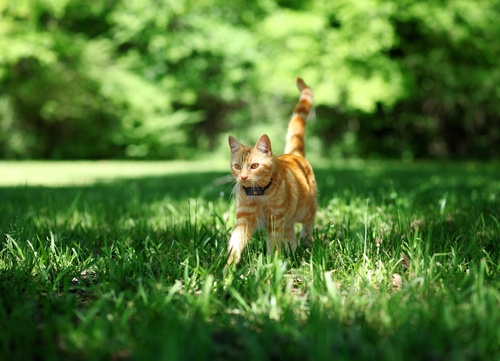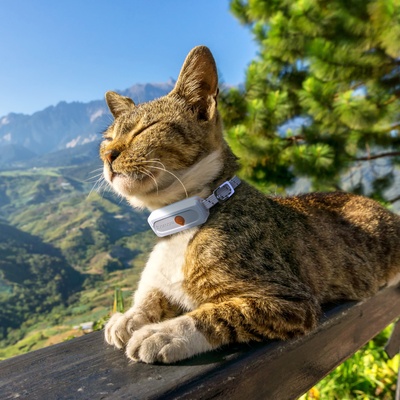Cat territory study
How far do the cats travel? How long are they active? What are their favorite places? And finally, what is their relationship with their environment?

How far do the cats travel? How long are they active? What are their favorite places? And finally, what is their relationship with their environment?
The Weenect survey examined the territorial behavior of domestic cats, seeking to answer several key questions: How far do cats travel? How long are they active? What are their preferred locations? And finally, what relationships do they maintain with their environment?
To obtain a complete and accurate picture, the survey relied on two data sources:
These two approaches combined provided a detailed picture of domestic cats' habits and behaviors, offering valuable information on the extent of their territory.
Discover the detailed results of our study, through a series of graphically illustrated lessons.
On average, a cat covers 2 kilometers a day. However, this average conceals a great deal of variability: some cats are content to cover only a few hundred meters, while others explore their territory extensively, reaching up to 7 kilometers daily.
The cats in our study cover an average of 20.23 kilometers per week, and 56.50 kilometers per month. Here again, there are major differences from one cat to another: no clear rule seems to stand out.
On average, cats spend 27.54% of their time in activity, which means they rest or nap for 72.46% of their day. But this general trend masks significant individual differences.
The level of activity does not always correspond to the distance covered daily. For example, some cats can cover almost 8 kilometers a day while being active only 10% of the time. Conversely, other cats may be active 40% of the time while covering only 500 metres a day.
These variations indicate that individual cat behaviors vary considerably, and that physical activity does not necessarily translate into long distances traveled.
Weenect's survey highlights that, although the majority of cats have the opportunity to go out, their outings are often framed by certain restrictions.
In terms of supervision, 53.44% of owners allow their cats to go outside under controlled conditions, while the rest of the cats have totally free access to the outdoors. This control may include direct supervision or the use of safety devices such as cat flaps or fenced areas.
The data reveals that 72.03% of cats are allowed out only during the day. A smaller percentage of cats, 27.14%, are allowed out both during the day and at night. Very few cats (0.84%) are allowed out only at night.
The majority of cats studied live in a house with a garden (91.76%), while a minority live in an apartment (7.16%) or a house without a garden (1.08%). The type of dwelling has very little impact on whether or not cats spend time away from home
Cats who stay within 100 meters of home (22.13%) spend an average of 9.05 hours outdoors. As for those who stray more than 100 meters (77.87%), they spend an average of 12.11 hours outdoors.
These results show that there is no correlation between distance travelled, time spent outdoors and the type of dwelling the cats live in. Once again, the individual wins out over the rule.
The data show that 83.89% of cats often go to the same place when they go out. This reveals a certain routine in their movements, indicating privileged territories that they explore regularly.
Among cats who frequent the same places, the most common destinations are neighbors' homes at 60.20%, woods, forests and parks at 10.20%, and finally fields, meadows and vineyards at 8.16%.
This propensity for regular visits to the same places, and especially to neighbors' homes, suggests that many cats lead what we might call a double life. They divide their time between their main home and these familiar places, creating little parallel lives.
The results of the study confirm cats' reputation as independent, domesticated yet wild creatures.
Cats develop unique habits, showing little correlation between their immediate environment and their outgoing behavior. They choose their own territories, whether close to home or further afield, and can lead a double life between their main home and other familiar places.
Ultimately, cats remain free spirits, but thanks to the Weenect XS GPS trackers, cat owners can track their cats' movements and physical activity and so, are able to be a part of their cats unique secret life.






